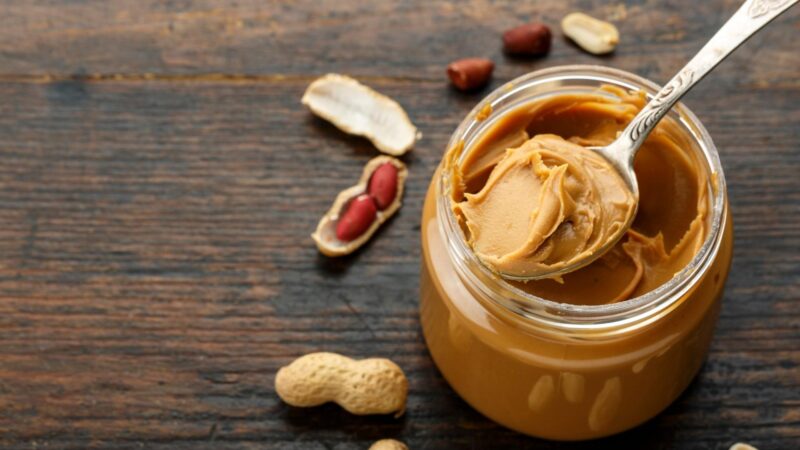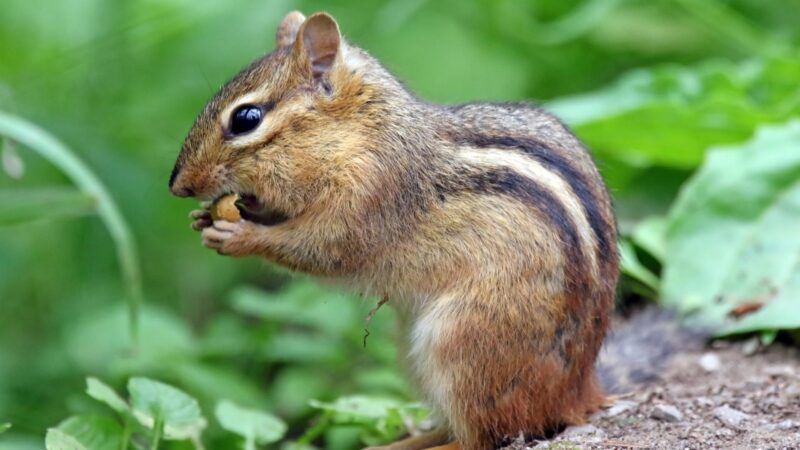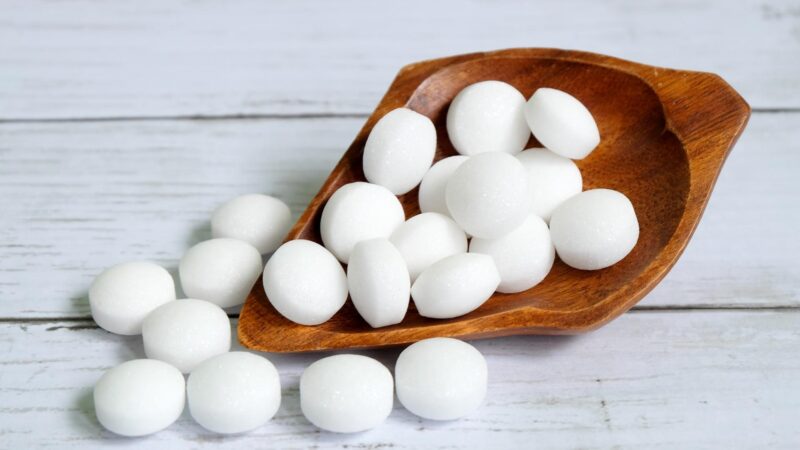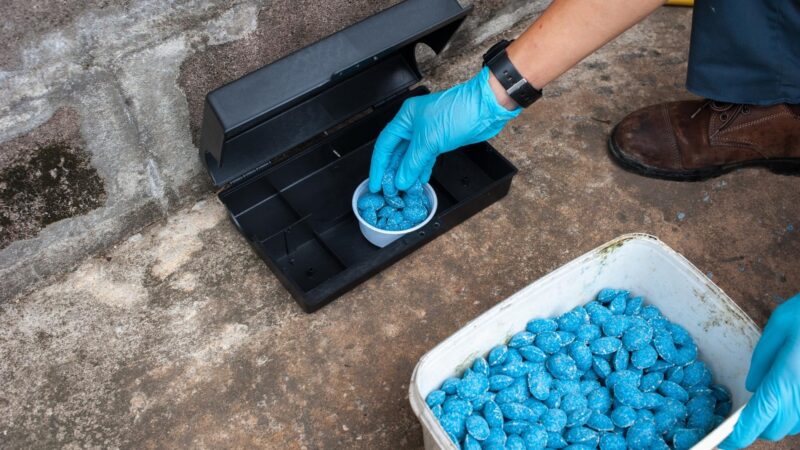Chipmunks make a burrow system that is divided into chambers of food storage and nesting area, as well as escape tunnels.
Their incredible digging ability can lead them to enter the attic and garage filled with fruits, seeds, and nuts. So, they can be a nuisance to humans. Moreover, they like to eat pet food, birdseed, flower bulbs, and seedlings.
How to make a homemade chipmunk trap? The box and rope trap is the old school trap for chipmunks that you can make by yourself at home. You just need a box and make a hole on the top. Insert and tie a rope to these holes. Additionally, you can also use mothballs and rat poison to get rid of these chipmunks.
Apart from making a trap, it’s best to know the behavior of chipmunks. You can also prevent them from pestering your yard, garage, or attic. Read on to learn more.
Table of Contents
What Is the Best Bait to Trap a Chipmunk?

The best bait to trap a chipmunk is peanut butter, seeds, nutmeats, and fruits.
What Is the Best Way to Trap a Chipmunk?

Apart from making the classic trap for chipmunk, the best way to trap a chipmunk is to prebait. Both snap traps and live traps can be successful.
You have to let the chipmunk enjoy the bait for 2 to 3 days without a trap. This method is to deceive the rodent.
For a snap trap like $averPak, you have to place it in a tunnel-like covering. You can use a box with no ends and make sure that there’s enough clearance to make the trap effective.
Setting up a trap adjacent to the wall or other objects requires covering. You can let a board perpendicularly lean on it.
With this setting, the chipmunk will feel safe when eating the bait. It’s also a way of preventing songbirds from getting caught.
You may put additional bait in the opening of the box or board to catch the animal’s attention.
How Do You Make Simple Chipmunk Trap? | A Step by Step Guide
Here’s a simple chipmunk trap with a high catch rate:
Necessary materials: a long piece of wood, bucket, think stick, bait, and paint stirring stick
Steps to follow:
Step 1: Choose the perfect spot to build the trap. The sign that you need is a fresh burrow that you can find in flower beds or somewhere in your yard.
Step 2: Arrange the thin stick and paint the stirring stick on the top of the bucket. The thin stick should be across the top of the bucket while the stirring stick is perpendicular to the former. Hence, the stirring stick sits halfway in the bucket’s mouth.
Step 3: You have to create a ramp by connecting the long piece of wood to the stirring stick. The bait like peanut butter or seeds must be placed on the end of the stirring stick. As balance makes two sticks hold on to each other, a ramp that a chipmunk can climb is formed.
Step 4: After the chipmunk passes the thin stick, they will step on the stirring stick that will flip over. So, this rodent will drop into the bucket with nowhere to escape.
How to Make a Homemade Chipmunk Trap?
The box and rope trap is a chipmunk trap that you can make at home. Here’s what you have to do:
Step 1: Get a box in the size of 12’ x 12’ and cut its flaps. Turn it upside down and make two-inch holes on the top. Insert and tie a rope to these holes, and its end should be tied to a tree or structure.
Step 2: Dig a hole that is around seven inches deep below the box. Make sure that the box will fit in it, so the chipmunk has no chance to escape. Put pumpkin seeds, sunflower seeds, fruits, and other kinds of food that this animal likes.
Step 3: This trap will require patience as you need to wait for the chipmunk to get into the hole that you dug.
Step 4: Once the chipmunk is in the hole, cut the rope to catch the animal. Put a plastic container or heavy objects on top of the box so they won’t escape.
Do Mothballs Get Rid of Chipmunks?

Mothballs or naphthalene balls can get rid of chipmunks due to their strong odor. However, it’s not advisable to use them as they’re not labeled for chipmunks.
People would usually put mothballs in the attic, wall spaces, and parts of the house or building with little air movement.
There’s a danger in using mothballs as explained by Dave Stone, a professor from Oregon State University, and Tim Stock, a pest management education specialist.
Mothballs can emit a persistent and noxious smell that can cause dizziness, difficulty breathing, nausea, and headache in humans.
Does Rat Poison Work on Chipmunk?

Just like with rats and mice, rat poison works on chipmunks too. However, it’s not labeled for chipmunks, so using it is not recommended, as stated by Robert A. Pierce II, a specialist from the University of Missouri Extension.
What Kills Chipmunks Instantly?
To kill chipmunk instantly, you can use an air rifle or BB gun and a .22 caliber rifle. But you have to check the local ordinances first so you won’t get in trouble.
For instance, DEC or the Department of Environmental Conservation of New York allows property owners to take unprotected animals any time of the year and by any means including shooting.
So, people in New York can shoot chipmunks that roam around their property because these rodents are recognized as unprotected animals. You may also get a nuisance wildlife control permit waived by the state and the landowner.
Annual renewal is required though. Before killing chipmunks by shooting, you have to know your local regulations regarding this matter.
Frequently Asked Questions
How Deep Do Chipmunks Burrow?
Chipmunks burrow up to 30 feet or more. They make hollow cavities where they rear their offspring and store food. Moreover, they burrow under stumps, woodpiles, and other areas in the yard.
They become pests when they burrow under basements, garages, patios, any foundations, and retention walls.
Do Chipmunks Leave Holes in the Ground?
The holes that chipmunks leave in the ground are the entrance and exit. They appear clean as the dirt is excavated. You’ll likely find them beside walls or large stones and at the base of fallen logs and stumps.
What Food is Irresistible to Chipmunks?
The plant matter is irresistible to chipmunks, and their diet varies every season. In winter, they eat the nuts and acorns that they stored.
The growing buds are treats for them during spring. In summer and fall, chipmunks enjoy eating berries and fruits.
What Smells Do Chipmunks Hate?
Chipmunks hate the smell of citrus oil, cinnamon oil, eucalyptus oil, and peppermint oil. You can mix two tablespoons of any of these substances in a quart of water to make a spray repellent.
Add two tablespoons of olive oil as well. You may also replace these oils with cayenne pepper. Following the same mixture, you have to boil it instead of just combining the ingredients.
Apart from making a repellent, it’s also helpful to put plants in your garden or yard that can deter chipmunks. You can grow garlic, marigold, and other strong-smelling herbs to keep them away from your yard.
What Do You Put in a Chipmunk Hole?
You can put the solution of essential oils that chipmunks hate on the holes. Another option is a cup of soapy water mixed with a tablespoon of garlic puree and some red pepper flakes.
You can also pour it into the areas where the burrows are and the base of structures or trees. Don’t forget to spray on the places where chipmunks can den-like the front porch or deck.
How Do You Lure a Chipmunk Out of Hiding?
If it’s stuck inside your house, put your pets in a separate room. Close the interior doors of the room where the chipmunk is, but you have to leave the exterior door and windows open.
You can give it some time to find its way out. If it remains in the room, you have all the reason to set a trap with bait to lure the chipmunk.
Will Coffee Grounds Keep Chipmunks Away?
Coffee grounds can keep chipmunks away, so you can sprinkle them around your plants and yards.
Can I Pour Bleach in a Chipmunk Hole?
You can pour bleach in a chipmunk hole to create a poison gas. But you have to mix it with ammonia.
Summary
Chipmunks can annoy you due to their burrowing ability and habit of hunting food. They can make long burrows that would guide them to your house. In addition, they would look for food, and even pet food attracts them.
With an abundance of food sources in your garden, they can also make a mess around it. Setting the right trap mentioned in this article will subdue their activities.
List of Sources
Controlling Nuisance Chipmunks
PB1624-Managing Nuisance Animals and Associated Damage Around the Home